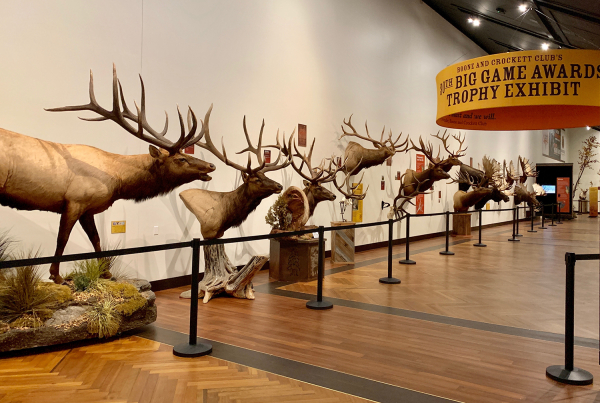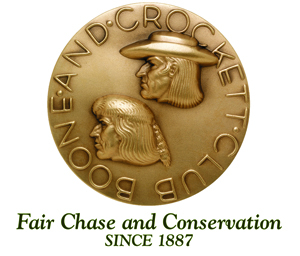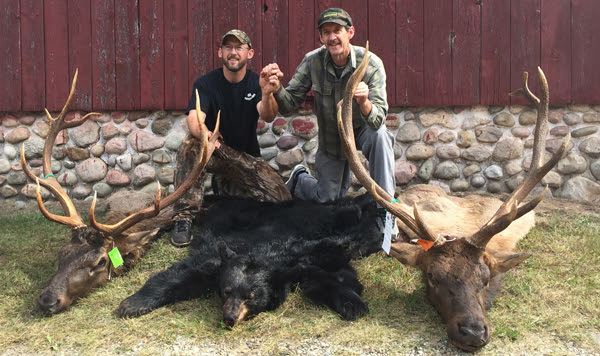By Glen Wunderlich
One good way to start an argument is to pronounce a certain firearm and caliber the perfect choice for deer hunting. A well-respected hunter/writer, Craig Boddington, who has hunted big game in 29 American states, has offered up his favorites and I’m about to dissect some of his rationale. However, when it comes to Michigan, common logic used elsewhere does not always apply.
To begin, there is no perfect choice for all of Michigan’s deer hunting territory. Plus, there is no one-size-fits-all approach. Deer hunters come in all sizes and ages and hunt in farm fields, woodlots, big woods and swamps. If we add caliber restrictions for the Southern zone, things get even more complicated. Here goes anyway.
Slug guns were popularized years ago when a line was drawn to separate Michigan’s Lower Peninsula into two zones. Since then, however, laws have changed with the times and those heavy hitting big bores are going the way of the phone booth. The now-legal straight-wall cartridges have been a big hit and the .450 Bushmaster is at the top of the list. Still a big bore, it can be relatively pleasant to shoot with a ported barrel for all but the most diminutive hunter. Other pistol cartridge options for rifles down to the .357 magnum can get the job done, as well as some of the old-time favorites such as the .44-40 Winchester. For youngsters, who may be recoil sensitive, muzzleloaders make plenty of sense, because loads can be reduced to suit the smaller hunters.
In thick cover for areas in Zones I and II, Boddington likes the fast-handling .30-30, but cautions it won’t offer the ranging abilities you need in open country. He explains that the fastest cartridges need extra-long barrels, and they also need considerable gun weight to keep recoil manageable. Long, heavy rifles aren’t pleasant to carry all day.
He also states that they are extremely awkward in a lot of deer stands and blinds. We differ on this point, because nowhere else is a heavy gun at home than in a hunting shack, while it rests on the window sill until it’s needed.
Although it’s legal to use .22 centerfire calibers, they are not necessarily ideal. Considering the average size of our whitetail deer, centerfires from 6mm through the big-bore bottleneck calibers have their place. Mr. Boddington also mentions we may “need” flatter shooting 30 caliber rigs for shooting to 300 yards to minimize holdover, but that only applies to optics with a single aiming point in their reticles. Today, options abound in mil-dot and bullet drop compensated glass that take the guess work out of the longer shots – assuming that range has been properly estimated or calculated.
Boddington explains that no whitetail hunting actually requires a magnum cartridge and here we agree. His personal choice for the most versatile and most perfect whitetail cartridges falls to the veteran triad formed by the .270 Winchester, .280 Remington, and .30-06. All are powerful and efficient cartridges that anchor deer up close . . . but also shoot flat enough to handle almost any shot most of us have any business taking. In fairness, a host of other cartridges such as the 7mm-08, 7mm Mauser, .308 Winchester, and magnums up to the .300’s are equally good, and most could be used interchangeably with no difference in results on game.
Boddington prefers bolt action rifles and his logic is hard to knock. They are available in most calibers, are reliable and accurate. An obvious “shortcoming” of single-shot guns is there are no quick follow-up shots. However, single-shots have a way of developing the single-shot mentality, which requires no quick follow-up shots.
I agree that the whitetail rifle should be scoped. This is not so much a matter of distance as it is the scope’s light-gathering capabilities during the critical periods at dawn and dusk. Fixed-power scopes are simple and weigh and cost less than variable-power optics and do well for most Michigan opportunities.
When it comes to accuracy, just about any firearm will produce acceptable results depending on the operator. If a hunter is able to keep 9 out of 10 shots in a six-inch circle at any given range, that hunter is ready to go afield with the gun of his choice, as long as he stays within his self-imposed limitations.
The conclusion is that there is no single, perfect deer hunting caliber or rig. It all depends.








 The Michigan Department of Natural Resources has recommended a series of deer regulation changes for the upcoming fall hunting seasons, which the Michigan Natural Resources Commission will be discussing over the next three months.
The Michigan Department of Natural Resources has recommended a series of deer regulation changes for the upcoming fall hunting seasons, which the Michigan Natural Resources Commission will be discussing over the next three months.